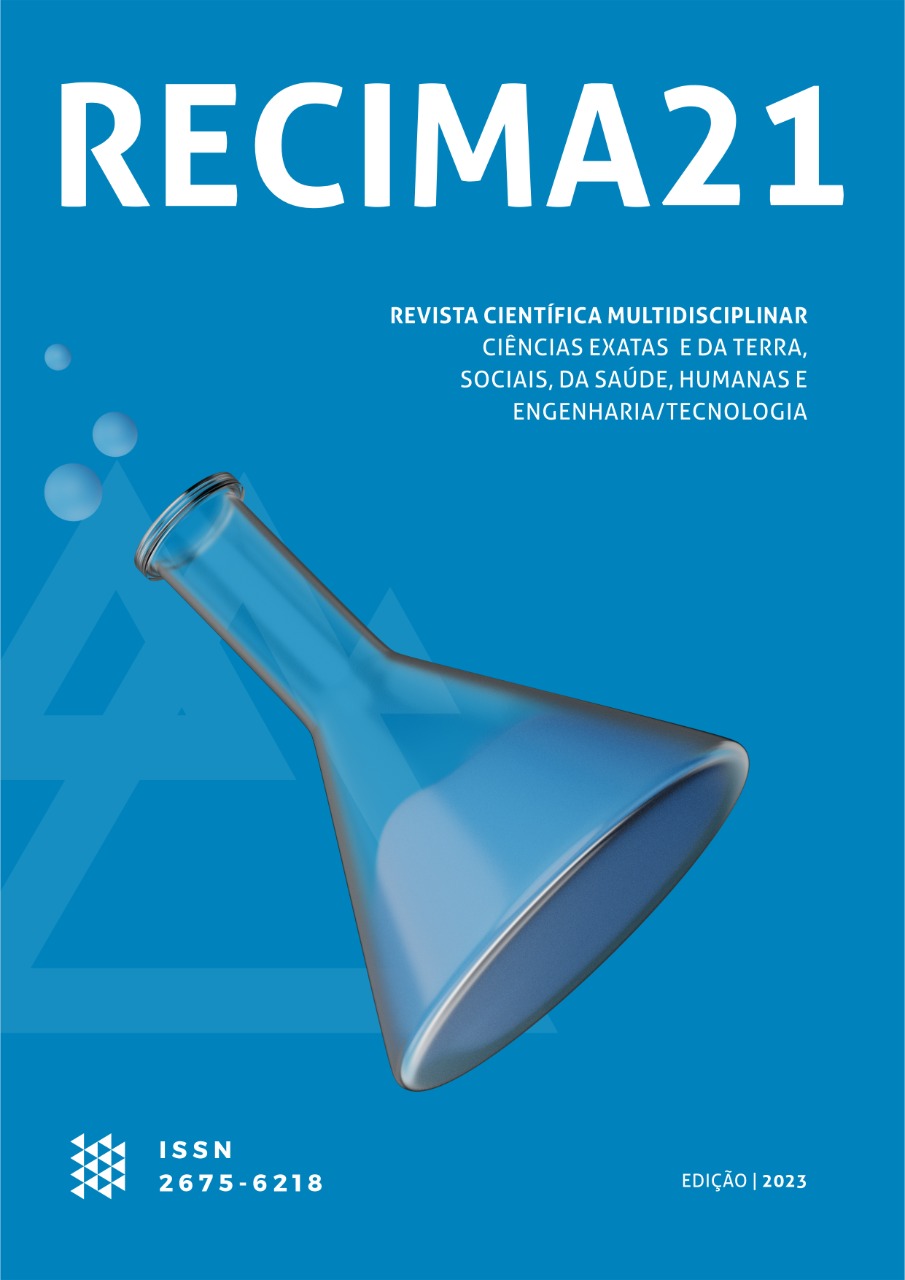MAPPING OF CANINE LEISHMANIASIS IN THE CITY OF CAXIAS-MARANHÃO
DOI:
https://doi.org/10.47820/recima21.v4i10.4111Keywords:
Zoonoses, Leishmaniose Visceral, Visceral LeishmaniasisAbstract
Visceral leishmaniasis is a zoonosis caused by the bite of infected females of Lutzomya
longipalpis. Females become infected by biting the infected dog, their main host, and
transmit it to humans through the bite. This disease can be fatal to humans if left
untreated. The mosquito thrives in humid places, rich in organic matter and with little
light. The city of Caxias-MA, as it does not have sewage systems, becomes an
excellent place for the development of this vector. There is no research in the literature
addressing the locations of the affected neighborhoods and this was the main objective
of the research, to develop the mapping of canine Leishmaniasis in the city of Caxias-
MA. During the development of the research, a survey was carried out on cases of
canine leishmaniasis, together with UVZ, the body responsible for zoonoses in the city
of Caxias-MA, with these being analyzed and then used to create graphs. The results
were satisfactory and it was possible to present the main affected neighborhoods, as
well as those not affected.
Downloads
References
ALVARENGA, D. G.; ESCALDA, P. M. F.; COSTA, A. S. V.; MONREAL, M. T. F. D.
Leishmaniose visceral: estudo retrospectivo de fatores associados a
letalidade. Revista da Sociedade Brasileira de Medicina Tropical. V. 43, n. (2): p.
-197, 2010. Acesso em fevereiro de 2020.
FOCACCIA, R. Tratado de infectologia. São Paulo: Atheneu, 1996. Acesso em:
fevereiro de 2020.
COSTA, C. H. N. How effective is dog culling in controlling zoonotic visceral
leishamniasis? A critical evaluation of the science, politics and ethics behind
this public health policy. Revista da Sociedade Brasileira de Medicina Tropical,
v.44, n.2, p.232-242, 2011.
ETTINGER, S. J., FELDMAN, E. C. Tratado de Medicina Veterinária. 4 ed., São
Paulo: Manole, 1997, vol.1, p. 565-67. Acesso em: fevereiro de 2020.
GONTIGO, C. M. F. & MELO, M. N. 2004. Leishmaniose visceral no Brasil:
quadro atual, desafios e perspectivas. Revista Brasileira de Epidemiologia, v. 7, n.
(3), p. 338-349. Acesso em Fevereiro de 2020.
IBGE - Instituto Brasileiro de Geografia e Estatística. População, Território e
ambiente. cidades.ibge.gov.baxias-ma.2017.
IKEDA-GARCIA, F. A.; MARCONDES, M. Métodos de diagnóstico da
leishmaniose visceral canina. Clínica Veterinária, São Paulo, ano 12, n. 71, p.34-
, 2007.
KOUTINAS, A. F. & KOUTINAS, C. K. (2014). Pathologic mechanisms underlying
the clinical findings in canine leishmaniosis due to leishmania
infartum/chagasi. Veterinary Pathology, v. 51, n. (2), p. 527-538. Acesso em:
fevereiro de 2020.
MAIA, L. S. Leishmaniose visceral canina: Aspectos clínicos e hematológicos
de casos suspeitos e confirmados atendidos no Hospital Veterinário da
Universidade de Brasília em 2011. /Laís Soares Maia; orientação de Ligia Maria
Cantarino da Costa - Brasília, 2013, p. 23.
MARCONDES, M.; VASCONCELLOS, S. A. Leishmaniose Visceral. São Paulo:
Departamento de Clínica, Cirurgia e Reprodução Animal da Faculdade de
Medicina Veterinária-UNESP - Câmpus de Araçatuba.
MINISTÉRIO DA SAÚDE, 2006. Manual de Vigilância e Controle da
Leishmaniose Visceral. Brasilia - DF. Ed. MS. 2018.
MONTANHA, F. P.; AZEVEDO, M. G. P.; FERNANDES, T. S.; OSHIMA, T. M.;
REMUSZKA, R. D. M.; SANTOS, M. M. Leishmaniose Canina: relato de caso.
Revista Científica Eletrônica de Medicina Veterinária, 2013. Disponível em:
http://faef.revista.inf.br/imagens_arquivos/arquivos_destaque/O3FcGy8Dt49RkCr_20
3-6-20-17-59-28.pdf. Acesso em: fevereiro de 2020.
REY, L. Parasitologia. 3. Ed, Rio de Janeiro: Guanabara Koogan, 2001. Acesso em:
Fevereiro de 2020.
RIBEIRO, V. M. Leishmaniose visceral canina: aspectos de tratamento e
controle. Clínica Veterinária, São Paulo, ano 12, n.71, p.66-76, 2007.
ROMERO, G. A.; BOELAERT, M. Controlo of visceral leishmaniasis in Latin
America: a systematic review. PLoS Negl Trop Dis.; v.4:e584, 2010. Acesso em:
fevereiro de 2020.
SCHIMMING, B. C. SILVA, J. R. C. P. Leishmaniose Visceral Canina-Revisão de
Literatura. Revista Cientifica de Medicina Veterinária. Periódico Semestral. 2012.
Acesso em: fevereiro de 2020.
TILLEY, L. P.; SMITH, J. R. Consulta veterinária em cinco minutos. Espécies
canina e felina. 3. ed., São Paulo: Manole, 2008.
TROY, G. C. American Leishmaniasis. In: BONAGURA; TWEDT. Kirk's Current
Veterinary Therapy XIV. St. Louis: Saunders Elsevier, 2009.
FARIA, A. R.; ANDRADE, H. M. Diagnóstico da Leishmaniose Visceral Canina:
grandes avanços tecnológicos e baixa aplicação prática. Revista Pan-Amaz
Saúde, 2012; v. 3, n. (2), p. 47-57.
Downloads
Published
How to Cite
License
Copyright (c) 2023 RECIMA21 - Revista Científica Multidisciplinar - ISSN 2675-6218

This work is licensed under a Creative Commons Attribution 4.0 International License.
Os direitos autorais dos artigos/resenhas/TCCs publicados pertecem à revista RECIMA21, e seguem o padrão Creative Commons (CC BY 4.0), permitindo a cópia ou reprodução, desde que cite a fonte e respeite os direitos dos autores e contenham menção aos mesmos nos créditos. Toda e qualquer obra publicada na revista, seu conteúdo é de responsabilidade dos autores, cabendo a RECIMA21 apenas ser o veículo de divulgação, seguindo os padrões nacionais e internacionais de publicação.













